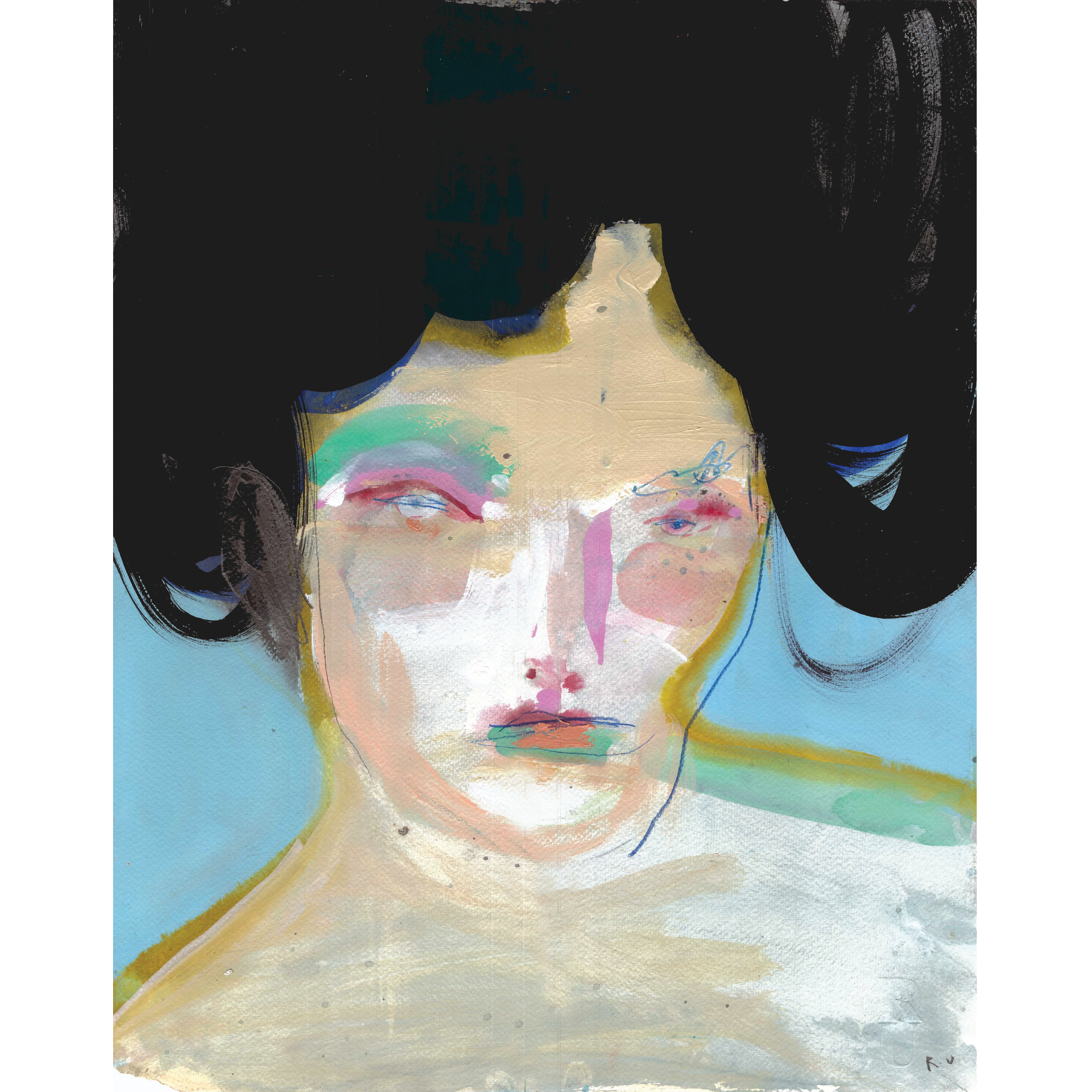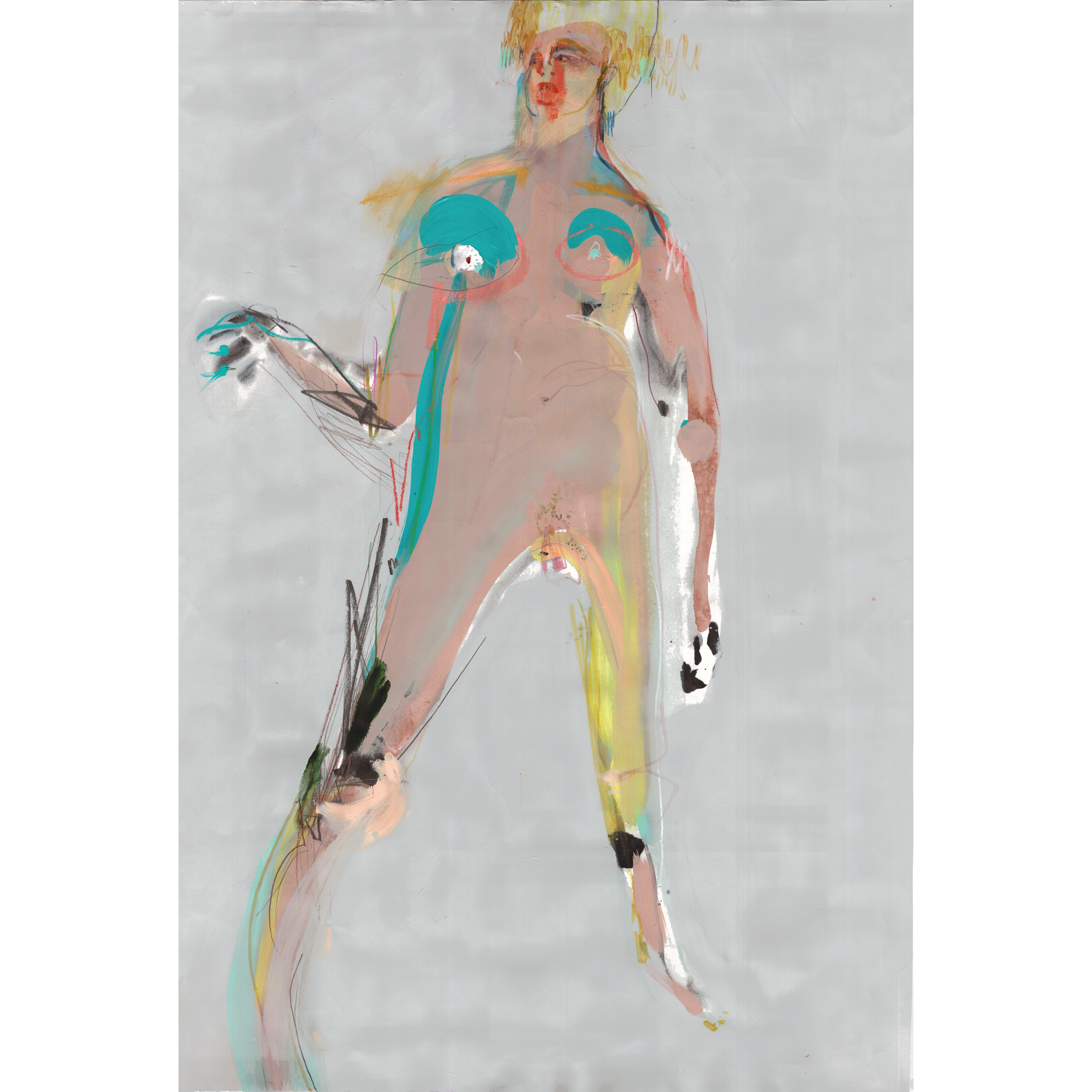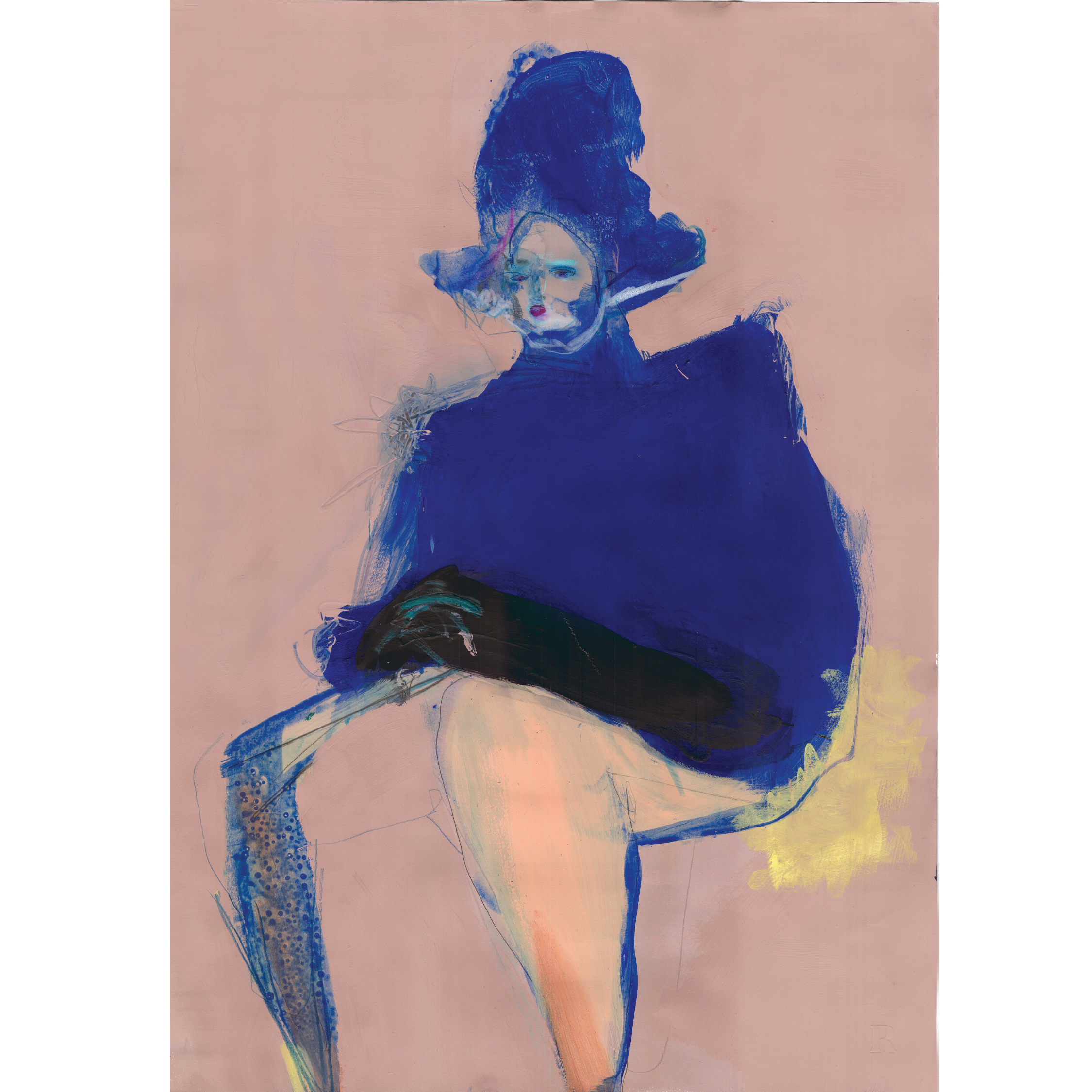AURUM x Rob Unett - Part I
"Creative Odyssey: The Artistic Journey of Rob Unett"
Rob Unett is an artist, image maker, consultant, and educator who currently serves as the Creative Director of the London College of Fashion (LCF). In his creative career, spanning over 20 years of bold and brave work, he has always stayed in touch with his raw, real feelings and has used prominent memories and multiple perspectives of reality in his practice.
I was welcomed to the new campus of the college with his firm handshake and bright laughter. As he reflects openly on the lessons that have enriched his journey, he breathes an enigmatic depth into the pristine canteen where we sat. He speaks proudly of the journey he has undergone from the roots of his working-class background and shares openly the precious tools and methods that are a testament to his transformation.
In this entry, we peel back his layers to discover the stories and ideas that have led to his broad success in art, fashion, and education, and most importantly, learning to reflect on it all. This discussion isn't just for artists. It’s for anyone curious about how ingenuity, self-determination, and artistic conviction can change your life
February 16 2024 - By Lisja Tërshana
Introduction
Lisja Tërshana (LT): Can you tell me about yourself, your background and your journey to where you are right now and how has fashion impacted you?
Rob Unett (RU): : Perhaps the best place to start is with education. I grew up in a large working-class family that wasn’t particularly 'creative,' if you define creativity through art forms like painting, sculpture, poetry, or performance. The creativity that formed part of my background had to be sort. I also grew up before the internet, so to see things you either had to be taught them at school, read about them in the library, or you had to see them on television. However, sometimes, seeing a glimmer of something can be a catalyst to want more of it and encourage you to explore different avenues when you leave school. I went on to do the BTEC diploma in fashion design, where I learned manufacturing, design, and drawing simultaneously. From there, I went on to do my BA in fashion, womenswear, menswear and printed textiles and then MA in womenswear at Central Saint Martins. In my education, I learned to make clothes, really well, and drawing was also heavily emphasised — they were the perfect ways for me to communicate and contribute to a conversation.
I left Central Saint Martins, and immediately received a job offers, accepting a position at a magazine as a fashion illustrator and subsequently became editor. I hadn’t done creative journalism in any real depth, but I possessed a unique set of skills: I had heavily studied fashion, worked in the industry in numerous capacities, I could make clothes, design textiles I understood the human body, I could illustrate well, technically draw, and I knew about business. It turned out, through my editors mentorship I could write quite well, too! This role involved me heavily in image-making and steered me towards mixing different media — drawing meets language meets photography — and expanded my communication through InDesign and Photoshop.
During that period, for quite some time, I mentored many people, especially new designers, helping them build their collections and their businesses. Then, the academic sector approached me to teach a series of lectures and workshops, which turned out to be very successful and led to my appointments at London College of Fashion.
LT: And now you are Creative Director of London College of Fashion. How do you see yourself in this position?
RU: This title to me only makes sense once you have a wide range of skills and experience — so to understand what makes the bigger picture. When people look at a painting, they often see the whole painting. I see the composition, the mixture of colours, marks, references, different types of ink etc. My mind considers so many aspects of the painting and beyond.
The way I paint, while emotionally charged for me, also involves a practical side which comes from my work practice of seeing holistically what is happening in the picture.
Creativity and Identity
LT: How do you cultivate a space for young artists to not only build their businesses, but also build their unique creative identities within the industry?
RU: That's a curious challenge, isn't it? The individuals I encounter are more than typically in their late teens or early twenties. So, my initial step is to provide them with a comprehensive perspective. For creatives, it's crucial to understand not just the artistic aspect but also the practicalities: the cost of materials, their use, procurement, and maintenance. These insights offer a glimpse into savvy business practices. Balancing technical knowledge with creative flair is key; it's what makes a practice sustainable in the long run. Consider an artist who sold a painting for 10 grand—a significant sum. But breaking down the time and costs involved, it becomes evident that the financial aspect is as crucial as the creative. This balance is not just about business; it reflects your identity as an artist. How you present yourself, even on platforms like Instagram, is part of this composition.
LT: When did you feel like your creative identity was defined, shaping your professional roles now as a creative director, teacher, and a unique artist?
RU: Never. It may sound unusual, and perhaps a bit pretentious, but I feel like my identity is in a constant state of flux, evolving every decade. This evolution is not just a biological process but also a creative journey. There’s a part of me that's still that working-class teenager, eager for creativity but unsure of the path forward. Then, there’s the influence of my time at Central Saint Martins, a period marked by a rigorous, highbrow environment that pushed me to produce extensively. This experience shaped me significantly. Transitioning into journalism, my role shifted from creator to observer and commentator, offering a societal lens on creative work.
Entering academia marked another evolution, bringing me closer to my core essence. As 'Painter' Rob, I engage in a more personal, introspective form of expression, driven by emotion yet balanced with my skills and passion for media composition. Throughout these transformations, one constant has been my ‘intensely driven’ personality.
LT: How would you define your relationship with your media of expression? Is there any message you wish to convey to your audience through your works?
RU: Media is your way to communicate as an artist. Every medium, from your humble pencil all the way to acrylics, oils or watercolours, has a character. It's akin to our individual personalities. For example, I might resonate with a lead pencil, while you could connect with a fan brush. Imagine that each tool speaks a different language; mastering these languages enriches your visual vocabulary.
To me, media and technique are intertwined: the broader my technique range, the more expansive my emotional expression becomes. Consider the technique of splatter painting: analysing why it works, the method of its creation, and the intricate balance of colour and the water-to-paint ratio. My ability to express emotions and ideas creatively is deeply rooted in this technical foundation.
LT: You place utmost importance on technique, and previously you have described yourself as a ‘process-driven’ artist. Is this a principle you also teach to your students, and if so, how is it usually received?
RU: In the classroom, my approach differs from my personal practice, though they are interconnected. Students I teach are often at the beginning of their journey or returning to art after a break, each with unique aspirations. My aim is to offer them a window into my process, which, given its broad spectrum, can be quite challenging for newcomers to grasp. I focus on instilling a strong foundation in technique, as mastering these skills enables them to take command of their art and explore further. So, yes, I emphasise the importance of technique to students. However, it's crucial to remember that teaching is about providing tools for self-discovery, not imposing personal beliefs. My goal is to empower students to find and develop their unique artistic voices.
Creativity and Intuition
LT: What role does intuition play in your practice, both in teaching and art-making?
RU: For me, teaching and art-making exist as distinct realms. My deep understanding of techniques is a testament to the wisdom that comes with age, enriched by experience. Despite the horrible physical tolls of life, the richness of what I’ve learned and the depth of my thought processes are invaluable.
In my art-making, intuition is paramount; it not only guides me but also signals when a piece is complete. This intuitive sense, honed over years, works hand in hand with the preparation involved in my practice—like sketching and colour mixing—before embarking on a major work.
In teaching, on the other hand, intuition is pivotal in forging an emotional connection with students. It involves discerning the classroom atmosphere and grasping the students’ mindsets. Are they engaged and grasping the material?
With the generational gap in mind, I often contemplate how I would have perceived the lessons at their age. While intuition plays a role, teaching also demands meticulous planning and structure. I must guide their learning thoughtfully, balancing intuition with a structured methodology. For intuitive teaching to be effective, students require a foundational level of skill and understanding.
LT: Does your intuition ever conflict with the techniques you’ve learned?
RU: My approach to techniques is not confined to traditional methods; intuition plays a significant role in my exploration and discovery of new techniques. There are countless ways to use tools and media beyond their conventional applications to achieve unique effects, making intuition a crucial element. To innovate, sometimes you need to challenge conventional norms and try unconventional ideas, like painting with our phones. This approach in a classroom setting can inspire students to explore their creativity without fear.
I've found that encouraging experimentation helps overcome the fear of failure. Many students worry about making mistakes, but I emphasise that there's no 'wrong' in art. If an experiment doesn't work out, it's simply a matter of starting anew. The fear of judgement can be paralysing, so in my classes, I encourage students to embrace messiness and learn from their attempts. It's about learning and growing, not just creating a perfect piece of art.
LT: Do personal highs and lows affect your artistic style and the art you create?
RU: Absolutely, my personal experiences have significantly influenced my artistic style. Looking at my earlier work, the difference is stark. It was all about precision: controlled pencil lines, minimal colour, figures that embodied a sort of bourgeois elegance. Repeatedly drawing this character, I eventually felt a lack of creative exploration. While there was an element of affection for this style, it began to feel too familiar, too safe, and ultimately, unfulfilling. This realisation led to a period of transformation in my art.
In seeking new creative avenues, I embraced change and experimentation. It's like being a child again, constantly curious and eager to try new things. To break away from the familiar, I even took the step of changing my name. This wasn't just a symbolic act; it represented a deeper shift in my approach to art, moving away from what I knew towards the uncharted territories of creativity.
LT: That's right, you use two surnames: Unett and Philips.
RU: And they're both genuine names. My family name is Unett, but my dad hated the name for various personal reasons. He changed it to Phillips, his grandmother's maiden name, as far as I know. That's the name I grew up with. During a period of creative frustration and a desire for change, I started experimenting with larger tools and different materials, significantly expanding the scope of my work. Some of my new paintings were massive, almost wall-sized.
This new body of work still had my unique style but with bolder strokes, more pronounced faces, and a shift in subjects. It felt right to adopt a name that reflected this new artistic phase. Thus, I became Rob Unett for my artistic endeavours while maintaining Rob Phillips for my academic / college related pursuits. It might seem like an odd decision, but it was a meaningful step in my artistic evolution,not meant to be pretentious.
LT: Does your life and attitude dictate your work, or the other way around?
RU: In my case, it's a dynamic interplay. My work is deeply rooted in high emotion, which significantly influences how I approach each piece. Art, while inanimate, becomes a canvas for the living, breathing artist's emotions. Some days, my mood is gentle and reflective, leading to delicate pencil work. At other times, when my emotions are more intense, I turn to large brushes and bold strokes. This variability in my artistic expression is a direct reflection of my emotional state at the time. For me, painting and drawing are not just forms of expression but also emotional outlets.




Editor - Lisja Tërshana
Lisja Tërshana (@tershana) is Art Editor of Aurum Arts. She is also an art curator, writer, and design strategist. As an MA Innovation Management candidate at Central Saint Martins, she is researching innovative philosophies and mediums to meaningfully transform the art ecosystem.
aurum
Our mission is to cultivate a community where Authenticity, Uniqueness, Reform, and Unity flourish, manifested through the Aurum Journal. We aim to unify life's energy with artful living, nurturing wellness and creativity in collaborative resonance.

